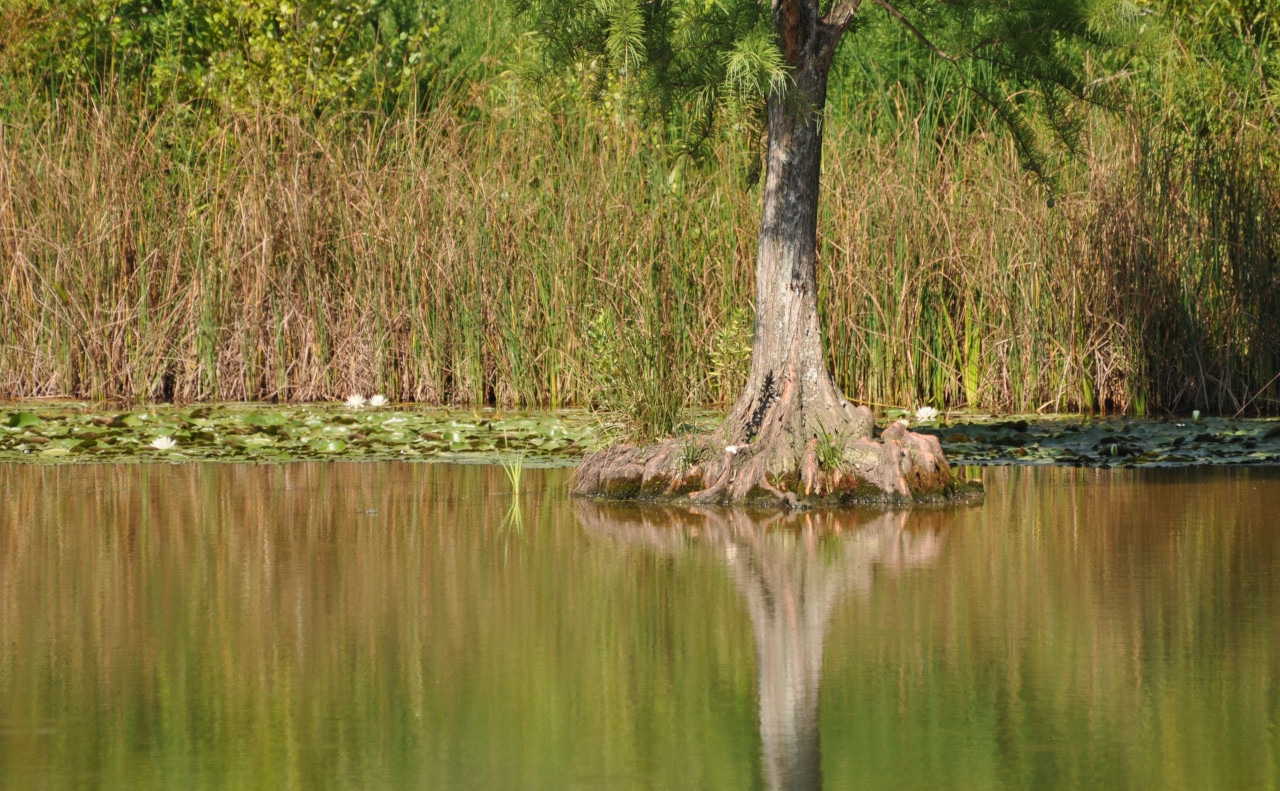Wetlands in the Museum Park
[[translate(episode,'title')]]
[[translate(episode,'audioCredit') || translate(episode,'credit')]][[translate(episode,'title')]]
[[translate(episode,'audioCredit') || translate(episode,'credit')]]Audio Transcript
You are standing at a v-shaped intersection with stairs located at your immediate 11 o’clock and a flat, paved path located at 1 o’clock. A weeping willow is located to your left, and the pond is straight ahead in the distance. A grassy hillside is to your right.
Wetlands in the Museum Park: Sometimes referred to as the “kidneys of the landscape,” wetlands filter pollutants from the water, reduce flooding, and recharge the groundwater. Wetlands are important for wildlife, providing habitat for unique species that have adapted to these challenging environments. The swale beside the path collects water from the surrounding landscape and directs it into a series of constructed wetlands at the pond. These wetlands transport water to the pond in a more natural, sustainable way when it rains. By transferring the water slowly, they reduce erosion and flooding downstream. The wetlands provide habitat for wildlife and contain native plants that filter rainwater before it enters the pond.
Within the pond are bald cypress trees. These trees grow up to 70 feet tall and have a unique root structure that develops called knees, which grow out of the water and allow the tree to breathe while it is submerged in water. Touch your knees and imagine how your knees may resemble roots. If you would like, reach out and touch the image of a wetland with a bald cypress on the right half of the sign. The tree’s root system is situated within a body of water with floating lily pads and tall reeds. Can you feel the shape of the knees?
To continue on the Eco Trail, take the path on your right and walk up the incline for 260 feet. The sign is on your left directly in front of a backless bench. Feel free to pause and listen to the next stop on the Eco Trail there.
Wetland photo by Cheryl Nelson
